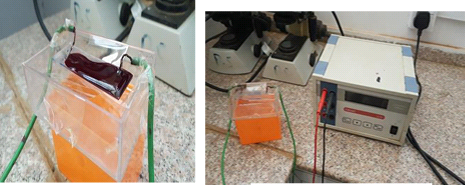Khotwa Charity Foundation
Posted 4 years ago
- 2560

Background: Tuberculosis is one of the most dangerous diseases that has afflicted humans for thousands of years, and still remains one of the leading causes of death in the world. Due to the tuberculosis cell wall complexity, the demonstration of TB is either specific and expensive ( e.g.: PCR) or less specific and sensitive, time-consuming, dangerous to laboratory personnel and require skillful worker. Unluckily most of the TB cases worldwide take place in developing countries (especially rural areas) where the expensive techniques are either not available or not affordable.
Objectives To develop this experiment to a small affordable device ( slides holder contain electricity adapter provide the certain current to run the test ) that could be owned easily in every laboratory in developing countries whereas providing a sensitive and specific result, not dangerous to the worker (burns and phenol fumes hazards), less time to run the test and doesn’t require skillful worker.
Goals:
1. To be inexpensive, easy to apply, and provided in rural areas.
2. To reduce the time required to perform the common technique.
3. To increase the sensitivity of the test.
4. To make it safe for the laboratory personnel by removing phenol from the preparation of the carbolfuchsine and the
heating step from the procedure.
SDG Goals
3- Good Health and Well-being, 9- Industry, Innovation, and Infrastructure
Project Type
Development, Humanitarian, Investment
Status
Vetted
Entity Type
Private
Stage
Analysis
Timeline
2020
Measurable Outcomes (Goals)
1. To make it safe to the laboratory personnel by removing
phenol from the preparation of the carbolfuchsine and the
heating step from the procedure.
2. To reduce the time that required to perform the common
technique.
3. To increase the sensitivity of the test.
4. To be inexpensive, easy to apply and provided in rural areas.